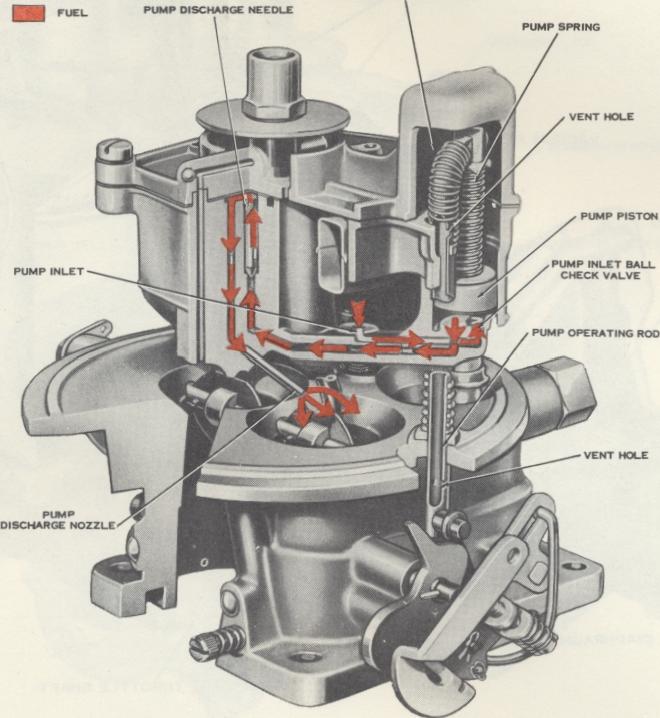CARBURETOR MODEL 2140
PUMP RETURN SPRING

ACCELERATING PUMP SYSTEM
6. ACCELERATING PUMP SYSTEM
The accelerating pump system remains unchanged. It supplies an initial charge of raw fuel when the throttle opening is increased. This charge of raw fuel prevents the power lag usually associated with the rapid opening of the throttle. The accelerating pump is linked to the primary throttle lever and is actuated by it. Fuel enters the pump chamber from the float chamber when the throttle is closed. When the throttle is opened, this charge of fuel is pumped into the airstream passing through the primary bores of the carburetor.
7. AUTOMATIC CHOKE SYSTEM
There has been no change in the automatic choke system. Manifold vacuum is confined within the primary bores when the choke plates are closed. This strong manifold vacuum enriches
the fuel discharge to permit the engine to run smoothly during the warm-up period. The position of the choke plates is governed automatically by the automatic choke and by the off-set feature of the choke plates themselves. A bi-metallic thermostatic spring reacting against a piston controlled by manifold vacuum insures accurate response of the choke to variations in engine speed and temperature during the warm-up period.
8. DISTRIBUTOR VACUUM PASSAGES
A single-diaphragm distributor is used in the 1954 applications of this carburetor. Basically, the system of controlling the spark advance is unchanged. It remains similar to that used on other Holley carburetor-distributor combinations. The addition of the secondary barrels in the carburetor, however, has necessitated changes in its distributor vacuum system.
The versions of this carburetor installed in